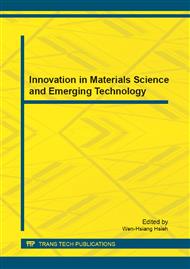p.325
p.330
p.334
p.339
p.344
p.349
p.354
p.359
p.364
Construction Contract Clarity: Conceptual Process Flow Modeling
Abstract:
Construction contracts can be a complex subject if issues corresponding to their interpretation and administration are not handled properly. The need for clarity of construction contracts is eminent especially in the context of the construction industry. The paper holds that a better interpretation and understanding of construction contracts could offer a proactive approach to avoid the inevitability of conflicts occurring in a project. Therefore, the objective of this paper is to develop a conceptual process flow model on how to clarify contract provisions in a contract. It is a subsequent development from the survey and case study that carried out for Malaysian Public Works Department (PWD) -203A (Rev. 10/83) Contract Form. The model is based on the results on the survey and case study, but it designed to render a generic approach of clarifying process for other contracts. Data Flow Diagram (DFD) method was selected to illuminate the process flow as the method focuses on object perspective and appropriate for this development. Certain limitations and recommendations of the model were highlighted. Ultimately, the model renders a useful guideline for future contract drafting and an important insight on clarity approach in contract administration for dispute avoidance.
Info:
Periodical:
Pages:
344-348
Citation:
Online since:
December 2011
Authors:
Keywords:
Price:
Сopyright:
© 2012 Trans Tech Publications Ltd. All Rights Reserved
Share:
Citation:


